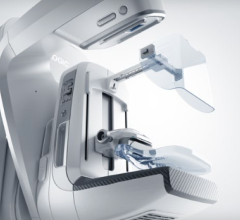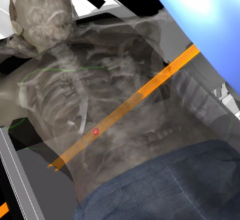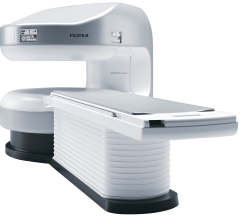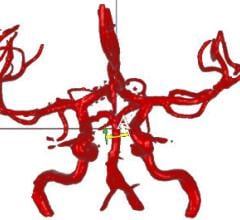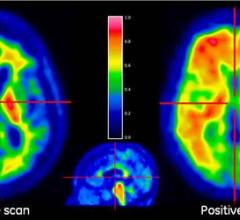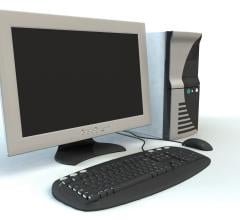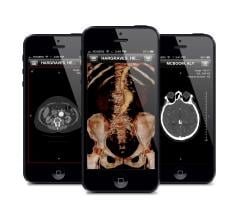A decline in smoking rates may mean that many people who could have benefited from early detection of lung cancer are dying because they don’t qualify for low-dose computed tomography (CT) scans, according to a group of Mayo Clinic researchers. Their research appears in the Feb. 24 issue of JAMA, the journal of the American Medical Association.
Americans are ready and willing to leverage health apps and wearable devices to improve their personal health, according to the findings released from the fifth annual Makovsky/Kelton "Pulse of Online Health" Survey.
Spellman High Voltage Electronics Corp. announced that it has signed an agreement with Power Valley Technologies of Beijing, China, to purchase the commercial assets and technologies of their power conversion group.
While most women understand the importance of health screenings, an estimated 72 million have missed or postponed a ...
Together with physicians, other research groups, and industry partners, Fraunhofer MEVIS is developing software to optimize radiation therapy. The fifth clinical workshop to evaluate this software took place in Bremen on Feb. 5-6.
Researchers at the University of California Los Angeles (UCLA) have found that radiation therapy is the most common treatment for men with prostate cancer regardless of the aggressiveness of the tumor, risk to the patient and overall patient prognosis. These findings lay the groundwork for improved treatment assessment by physicians and to better inform men fighting the disease.

SPONSORED CONTENT — Fujifilm’s latest CT technology brings exceptional image quality to a compact and user- and patient ...
New research from Johns Hopkins School of Medicine reveals a high value for scans which could lead to future change of reimbursement policies for follow-up positron emission tomography/computed tomography (PET/CT) studies in lung cancer. The study, featured in the February 2015 issue of The Journal of Nuclear Medicine, establishes the value of fourth and subsequent follow-up PET/CT scans in clinical assessment and management change in patients with the disease.
Fujifilm’s APERTO Lucent is a 0.4T mid-field, open MRI system addressing today’s capability and image quality needs ...
Pie Medical Imaging BV announced that it received 510(k) clearance from the U.S. Food and Drug Administration for its CAAS A-Valve product including the quantitative Regurgitation Analysis (qRA) workflow. The qRA workflow is the first 510(k) cleared image analysis technology to determine aortic regurgitation based on X-ray angiography.
Agfa Healthcare announced the commercial launch of its Enterprise Imaging for Cardiology Suite and strategic relationship with TomTec to provide a unified cardiology diagnostic and clinical imaging solution. The solution will be on display at the American College of Cardiology (ACC) 2015 meeting, March 14-16, 2015 in San Diego.
A pilot study led by researchers at Joslin Diabetes Center has revealed that it is possible to use magnetic resonance imaging (MRI) to "see" the inflammation in the pancreas that leads to type 1 diabetes. This discovery could be a boon for research on methods to slow or halt the disease at an early stage, and could also guide insights into how diabetes progresses.
SPONSORED CONTENT — Fujifilm’s latest CT technology brings exceptional image quality to a compact and user- and patient ...
The Mevion S250 proton therapy system has become the first proton therapy system to receive a medical device license from Health Canada, the federal department responsible for public health, and is now approved to be installed at cancer facilities across the country.
Mobius Medical Systems LP announced the release of Mobius3D version 1.5. For users with the MobiusFX treatment verification module, the newest version of Mobius3D automatically verifies accurate delivery of every fraction in a patient’s course of treatment.
A recently completed National Institutes of Health-funded trial confirms the efficacy of blood flow measurement technology from VasSol Inc. to predict the possibility of repeated stroke in at-risk individuals.
SPONSORED CONTENT — EnsightTM 2.0 is the newest version of Enlitic’s data standardization software framework. Ensight is ...
Pediatric cardiology researchers and clinicians from numerous centers around the world gathered at the Cardiology 2015: the 18th Annual Update on Pediatric and Congenital Cardiovascular Disease conference, Feb. 11-15 in Scottsdale, Ariz. sponsored by The Children’s Hospital of Philadelphia and Phoenix Children’s Hospital.
At the 2015 annual meeting of the Healthcare Information and Management Systems Society (HIMSS), Carestream will demostrate its flexible Clinical Collaboration Platform, which now offers a new module to tag clinical data files and bring them into the workflow. These new capabilities build upon Carestream’s fully featured vendor neutral archive (VNA) architecture.
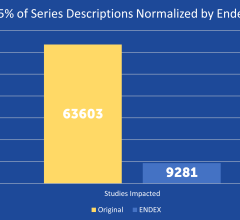
SPONSORED CONTENT — EnsightTM 2.0 is the newest version of Enlitic’s data standardization software framework. Ensight is ...
One of the hottest topics in current Alzheimer’s research is brain scans that visualize tau pathology in living people. With the advent of positron emission tomography (PET) tracers that label neurofibrillary tangles, researchers are now able to "see" and quantify both hallmark pathologies defined by Alois Alzheimer in 1906: amyloid plaques and tau tangles. Tau tracers dominated the agenda when 340 researchers convened in Miami Beach, Florida, recently to debate the current edge in human amyloid imaging.
Accuray Inc. announced that the first TomoTherapy System in Latin America dedicated solely to the treatment of breast cancer is now operational at FUCAM (Fundacion de Cancer de Mama) in Mexico City. More than 120 women have been treated with the radiation-therapy technology since the center began using it more than two months ago.
At the 2015 National Football League (NFL) Scouting Combine in Indianapolis, a Carestream DRX-1 detector will be used with the existing X-ray system at Lucas Oil Stadium to produce high-quality diagnostic images in seconds.
Three out of five healthcare IT professionals believe that government mandates are having a negative effect on their industry, according to a study conducted by Peak 10, a national information technology (IT) infrastructure and cloud services provider. The majority (94 percent) also noted that complying with regulations influences IT strategy and decision-making. With rare exception, respondents claimed they lack the expertise necessary to navigate the maze of government regulations.
At the SPIE Medical Imaging Conference, ContextVision exhibited results from research conducted in collaboration with Texas Instruments and High Performance Consulting on 3-D adaptive filtering for improved image quality on portable medical devices. Björn Norell, research scientist at ContextVision, presented the findings.
Calgary Scientific Inc. announced the release of ResolutionMD 5.0, which offers better access to health information, supports increased teamwork and enhances communication among practitioners and patients.


 February 24, 2015
February 24, 2015 

